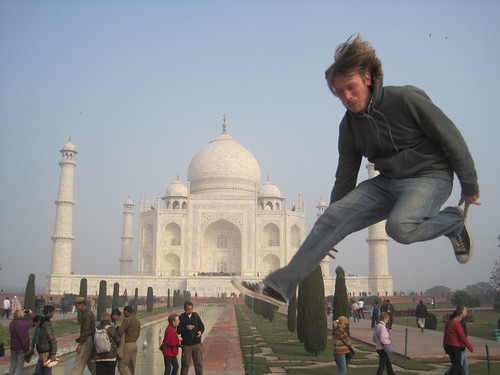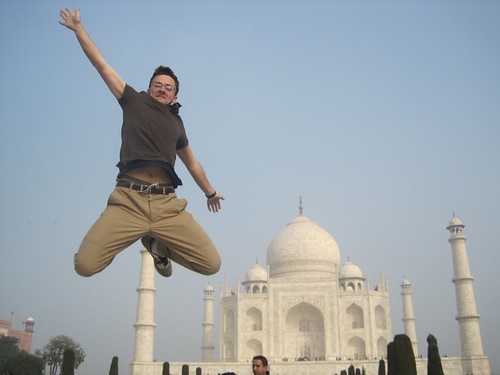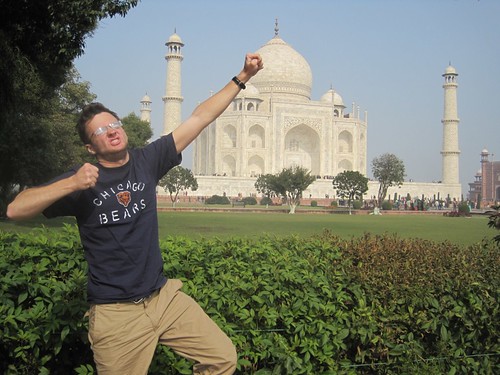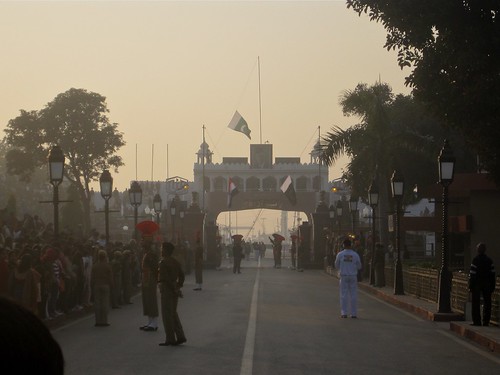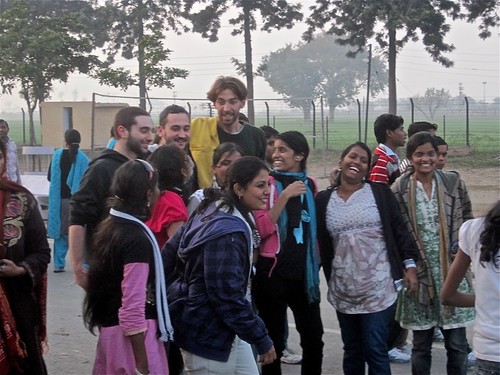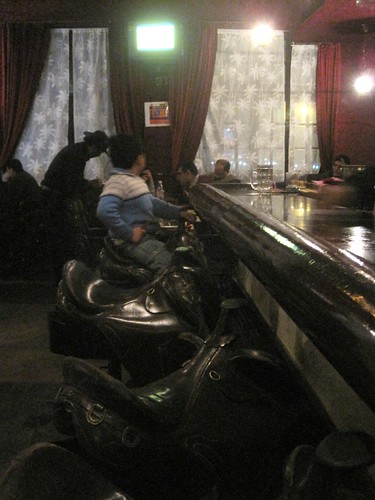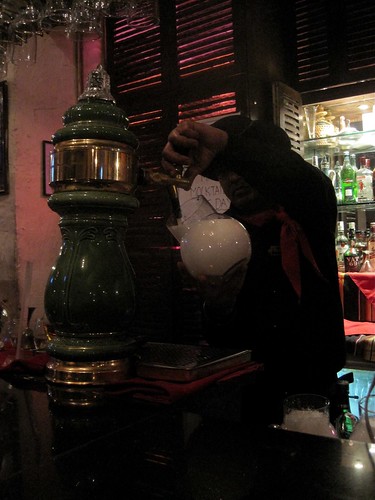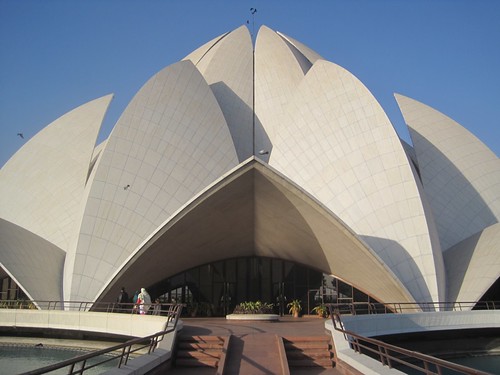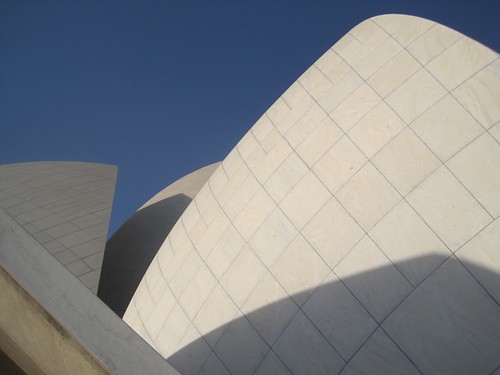Anyway, India’s going nuts about this. Because the matches last all afternoon and evening, wherever you go, every TV is tuned to whatever match is on. There are Nike billboards everywhere with Indian cricket players on them, too, which featured them in full clothing before the Cup started, then were replaced with the same player, but shirtless, once it started. Lays has a series of promotional potato chip flavors out, representing stereotypes of the major countries (England Grilled Cheese, South Africa Peri Peri Chili, West Indies Hot n’ Sweet Chili, etc.).
The Cup hasn’t been without its problems, though, and India has once again shown that it really can’t put on an event like this and meet international standards. The first major problem was that Eden Gardens, India’s largest and most hallowed Cricket stadium, underwent renovations for the World Cup which were not finished in time, resulting in it being declared unsafe for play. The first match for there, India-England, was moved to a much smaller stadium in Bangalore, resulting in severe ticketing problems, as well as bigger issues for the England fans who now had to switch all of their plans to Bangalore, rather than Calcutta. This hugely compounded a ticketing scandal that saw the vast majority of tickets given away for free to anyone chummy with the cricket people, and resulting in fighting as regular fans scrambled to scoop up the handful of tickets put on sale to the general public. As is typical, the Indian press didn’t report much on this, and people here seem oblivious to the scandal. One of my friends got free tickets to the final in Mumbai (for which virtually no tickets are available to the public), and was bragging about how she didn’t have to pay anything. I had to explain to her that no one’s paying to see the matches–most every ticket is free.
This all has huge shades of the debacle that was the Commonwealth Games, another every-four-year knockoff that’s only played in the Commonwealth. India got to host that back in October, and because the Indian press was in the tank for it, everyone here was under the impression that it was wildly successful. In reality, everything was sloppily thrown together at the last minute, with venues surrounded by pools of stagnant water in the middle of Dengue season. A footbridge collapsed, killing 25 people. The Athlete’s Village was uninhabitably filthy, only remedied after teams arrived and complained. Many of the city-wide infrastructure improvements remained unfinished even months after the games had taken place. And they had the same ticketing problems, with most of the tickets being given away to anyone well-connected. The problem there was that most of those free tickets went unused, resulting in the same fighting to snap up what was available, but with the stadiums also being half-empty for the events. And like the World Cup, most of this bad news was swept under the rug. A Times of India poll showed that, after the Games, over 80% of Indians believed that India had "arrived as a sporting nation" and should bid for the Olympics. I guess none of these Indians know much about the Olympics’ standards, or that India has only won 20 Olympic medals ever, and that the IOC cares about that. I wonder whether they know that, while many were hoping for China’s Olympics to somehow crash and burn, they actually pulled it off without a hitch.
With the Commonwealth Games, the line in the face of criticism is "The events went flawlessly." Things may not have been pretty, there may have been a few deaths, and they may have thrown it all together at the last minute, but the Games themselves were smooth. Such could be the saving grace of the Cricket World Cup, too: the cricket itself has been stellar so far. The high point, by far, was the England-India match, the one moved from Calcutta to Bangalore. To skip to the end of the story, the match ended in a dead tie. 338-338. After 8 hours of pure batting and high tensions, England posted the exact same total as their former colony had put up before them. This is still the only match I’ve watched in full, as it was the best showcase the sport could have put forth. As England chased a total that the announcers described would require a "miracle," they slowly but surely found themselves slightly ahead of India’s run total for the bulk of the overs. Around #40, they choked. Hard. Their good batters started going down like flies, eventually leaving them at the bottom of their order, needing 28 runs from 2 overs (12 pitches). After a miraculous series of sixes, England pulled out exactly 28 runs, for a sky-high 14 run/over rate, tying the match. The best part was that, while everyone was a little dazed at India’s tie, everyone knew that they’d just seen one of the best one-day games ever.
Most matches seem to be decided halfway through the first team’s turn at-bat–you know what they’re going to get, and you know if the other team’s capable of chasing it. This one was good to the last at-bat, showing, I think, that a sporting event can last just as long as it stays exciting. You could play football for a week if it stayed close and you had an infinite supply of cortizone. The thing is, we don’t play our sports for more than a couple hours, because we know most of them would get out of hand, and although it’s a rare moment in cricket when it’s good to the last bowl, they play all day anyway. The tournament itself is still up for grabs, and there’s always the chance of another stellar game. But to be honest, I’ll still be very glad to get home and see some hockey. I can discuss the merits of cricket, but at the end of the day, it doesn’t really compete with the other major spots. I think there’s a reason it’s only played in the Commonwealth.
20 minutes of highlights of the India-England match. Note that the sport requires 20 minutes of highlights. But it does give you some video of a real cricket match, and you also get to see Stumpy, the World Cup's mascot, at the beginning. England's run starts at about 17:30.



